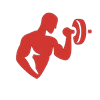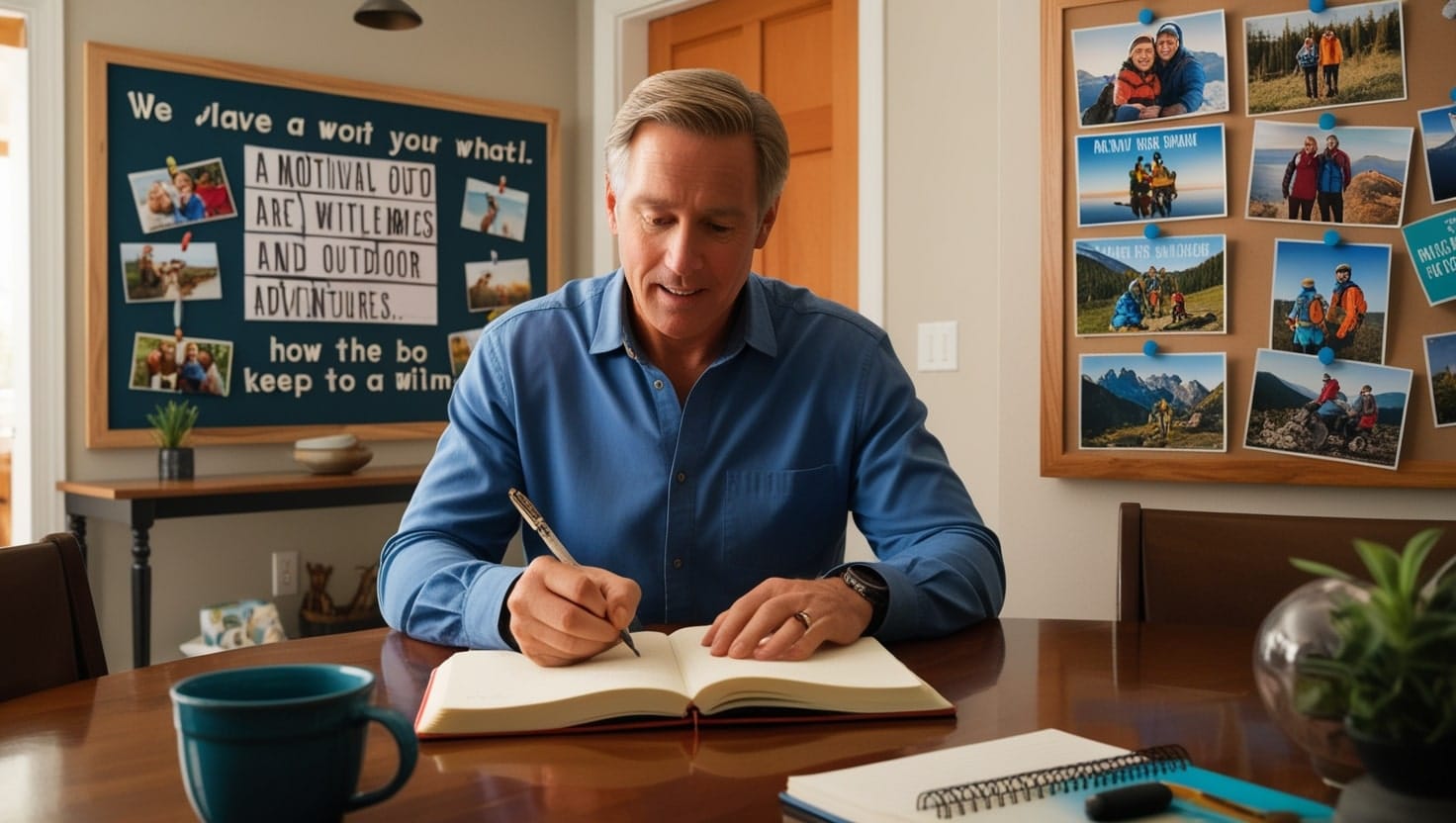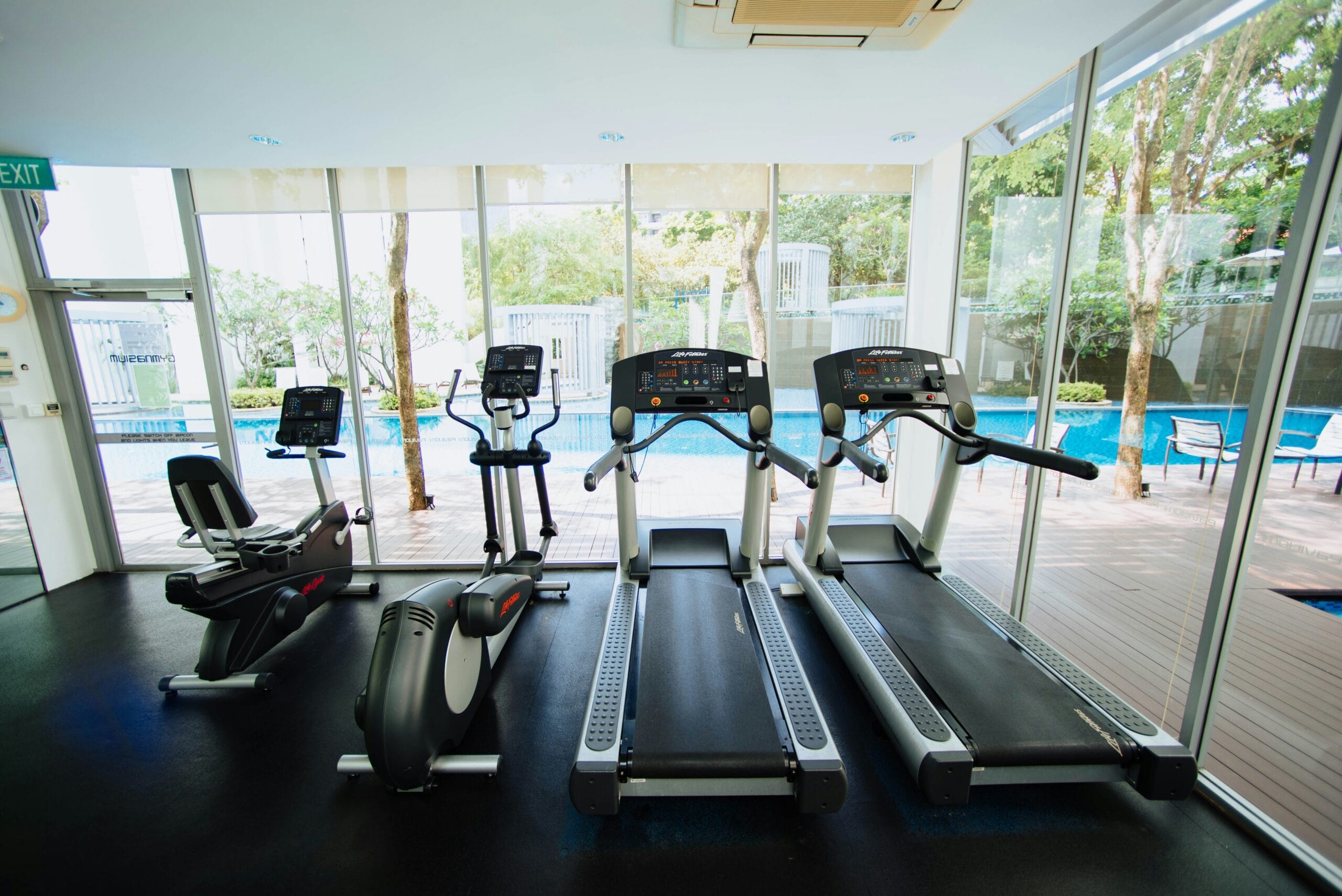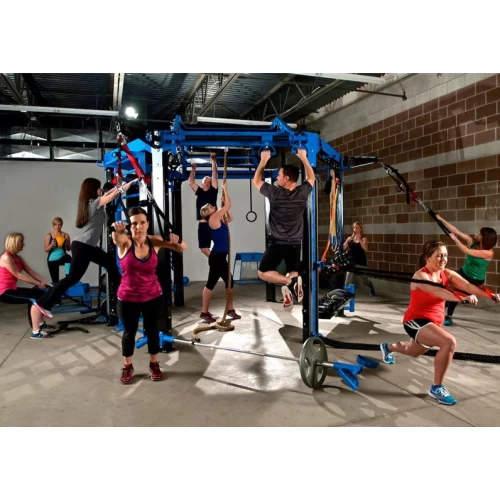
When Mark hit his 40s, he realized life in sunny California was still full of opportunities—but his energy wasn’t what it used to be. Juggling a demanding job, family responsibilities, and his passion for surfing meant he had to rethink his fitness routine. “I wanted to feel strong and fit again,” he said. “But the gym wasn’t always an option.” So, Mark set out to create the ultimate home workout plan for men over 40, and today, I’m sharing his story and routine to inspire you.
Mark’s journey began one bright morning when he found himself out of breath after a simple hike along the Californian coast. It hit him hard—the realization that his fitness was slipping away. “It wasn’t just about looking good,” Mark recalls. “It was about feeling good, staying active with my kids, and being able to keep up with life’s demands.” He thought back to his younger days when he could surf for hours or tackle long bike rides without breaking a sweat. But now, even getting out of bed some mornings felt like a chore.
Determined to turn things around, Mark decided to take matters into his own hands. He began researching ways to build strength and stamina that didn’t require expensive gym memberships or complicated equipment. “I needed something practical, something I could stick to,” he said. He experimented with various exercises, creating a routine that fit seamlessly into his busy lifestyle. It wasn’t long before he started noticing changes—not just in his body, but in his energy levels and overall mood. “I felt like myself again,” Mark shared with a smile. “Like I could take on the world.”
Mark’s story isn’t just about physical transformation; it’s about regaining control of his life and setting an example for his family. “My kids started joining me in some of the workouts,” he said proudly. “It became a family thing, something we could do together.”
Introduction
Life after 40 can feel like a crossroads. For many men, it’s a time when the youthful energy that once seemed endless begins to wane. Mark, living in the vibrant and sunny state of California, found himself in this exact situation. Despite his love for surfing and outdoor adventures, he started feeling sluggish and less motivated. He’d look in the mirror and think, “I’ve got to change something.”
For Mark, the journey wasn’t just about fitness; it was about reclaiming his confidence and zest for life. He realized that while he couldn’t turn back the clock, he could take control of his health. “I wanted to prove to myself that I could still be strong, active, and full of energy,” he shared. That’s when he decided to create a workout plan tailored to his needs—something sustainable, effective, and doable right from home.
This wasn’t just about physical fitness, either. It was about being able to keep up with his kids, stay active on the California beaches, and feel ready for life’s adventures. “It’s about living fully,” Mark says. “Because when you feel good physically, everything else falls into place.”
Mark’s story is one of inspiration and practicality. It’s a reminder that even with a busy schedule, anyone can make time for their health. And the best part? You don’t need a gym membership or fancy equipment to do it. With his California-inspired home workout plan, Mark shows how a little commitment and the right routine can make a big difference.
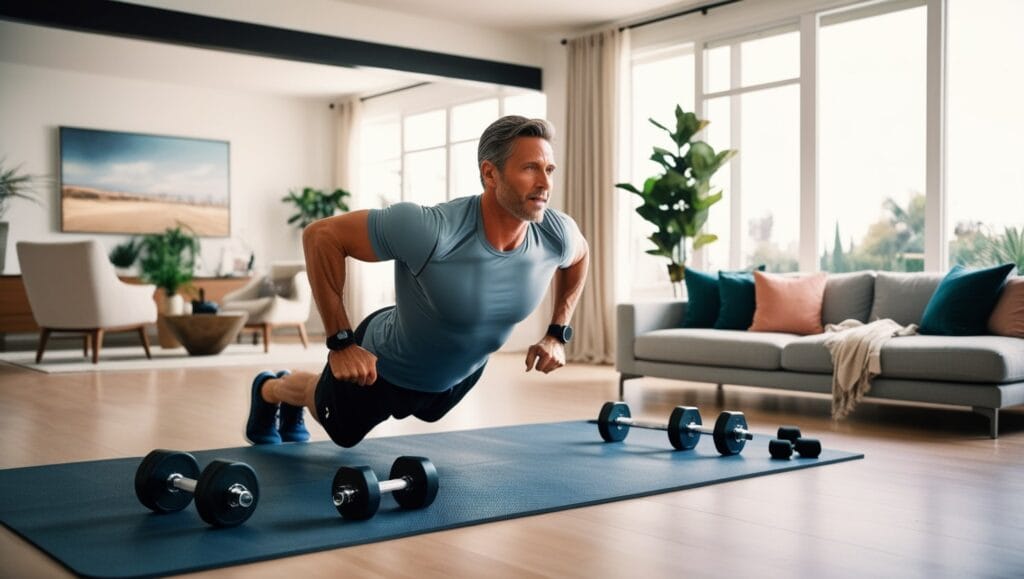
Why Home Workouts Work for Men Over 40
Mark discovered that working out at home offered flexibility, privacy, and the chance to stay consistent. “Honestly, it’s about making it fit into your life,” he said. “You don’t need a fancy gym to get results.”
For men over 40, home workouts provide a unique advantage. First, they eliminate the travel time to and from a gym, allowing you to fit exercise into your busy day. Mark pointed out that even 30 minutes at home could be incredibly productive. “It’s not about how much time you spend; it’s about how well you use it.”
Another reason home workouts work is the focus on exercises that protect joints, build strength, and maintain flexibility. Mark emphasized the importance of avoiding high-impact activities that could strain the body. “It’s not about competing with 20-year-olds,” he explained. “It’s about feeling your best and staying injury-free.”
Home workouts also allow for personalization. “You can adjust the routine to fit your goals,” Mark shared. Whether it’s improving stamina, building muscle, or enhancing overall well-being, you can create a plan that’s just right for you.
Additionally, working out at home provides privacy. Mark mentioned that for many men over 40, the gym environment can sometimes feel intimidating. “At home, you’re in your comfort zone,” he said. “You can focus entirely on yourself without distractions.”
Finally, consistency is key. Home workouts remove excuses like bad weather or gym closures. “The equipment is right there,” Mark said. “Once you make it a habit, it becomes part of your lifestyle.”
By embracing home workouts, men over 40 can enjoy a convenient and effective way to stay fit while managing their other responsibilities. Mark’s journey proves that with the right mindset and routine, it’s entirely possible to stay active, healthy, and energized.”
Mark’s California-Inspired Home Workout Routine
Mark’s workout routine was designed to be simple, effective, and sustainable, reflecting the easy-going yet active lifestyle of California. Living near the beach, Mark wanted a routine that would complement his outdoor activities, from surfing to hiking, without putting extra strain on his body. His routine includes a mix of bodyweight exercises, mobility drills, and core-strengthening movements that could be done in the comfort of his home or even in his backyard.
One of the first elements of his routine was a daily morning stretching session. “It’s essential to wake up your body and get the blood flowing,” Mark explained. His routine starts with gentle stretches and dynamic movements to increase flexibility and prevent stiffness, something that becomes more important as we age. These stretches focus on the back, hips, and legs—areas that often feel tight as the years go by.
Incorporating strength training was another key part of Mark’s plan. Instead of relying on heavy weights, he focused on bodyweight exercises like push-ups, squats, and lunges. These exercises not only built strength but also improved muscle endurance, making it easier for him to stay active throughout the day. “I didn’t need heavy equipment,” Mark said. “Bodyweight exercises are efficient, and they build functional strength that helps in real-life situations.”
Mark also made sure to add core exercises to his routine, such as planks and leg raises. “A strong core is the foundation of a strong body,” he noted. Having a strong core is vital for maintaining posture, stability, and balance, especially as you get older. These exercises also helped Mark improve his surfing performance by enhancing his balance and stability in the water.
Finally, Mark’s workout routine emphasized the importance of rest and recovery. He understood that overtraining could lead to injuries, so he made sure to give his body time to recover after each workout. “Rest days are just as important as training days,” he said. Mark would typically follow his workouts with stretching or light yoga to help release muscle tension and prevent soreness. This balanced approach allowed him to stay consistent without burning out.
Here’s the routine Mark swears by—designed to boost energy, build muscle, and improve overall health.
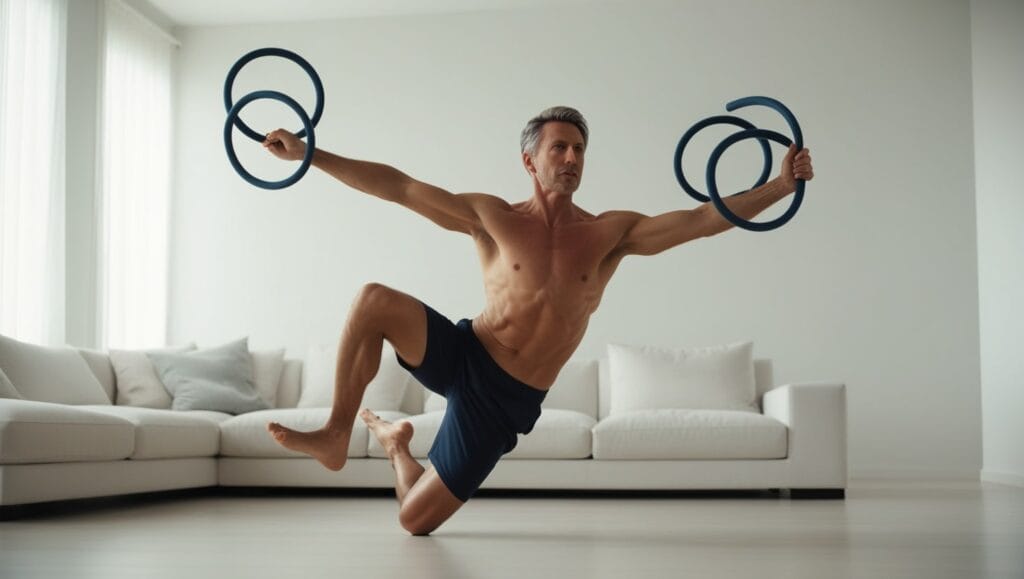
Warm-Up (5-10 Minutes)
Starting any workout with a proper warm-up is essential, and Mark learned this early on.
“A warm-up is like preparing your body for the task ahead,” he explains.
“Without it, you’re setting yourself up for injury.”
Mark’s warm-up routine consists of gentle movements that gradually increase the heart rate and loosen up the muscles.
Simple exercises like arm circles, shoulder shrugs, and leg swings get the body ready for more intense activity.
One of the reasons a warm-up is so important is that it increases blood flow to the muscles, making them more pliable and less prone to strain.
Mark focuses on areas that tend to get tight with age, like the hips, lower back, and shoulders.
“Those are the areas that need the most attention as you get older,” he says.
“By loosening them up, you reduce the risk of injuries during the workout.”
This approach helps him stay injury-free while staying active.
Another aspect of Mark’s warm-up is mobility drills.
“It’s not just about warming up; it’s about improving flexibility and range of motion,” he points out.
He includes movements like hip rotations, ankle rolls, and torso twists to ensure that his joints are ready for action.
These exercises also help improve balance, which becomes more important as we age.
A good warm-up increases overall body awareness, making movements more fluid during the workout.
Mark also believes in starting slow and building up intensity.
“I never jump straight into a tough exercise,” he says.
His warm-up routine gradually increases in intensity, matching the type of workout he’s about to do.
Whether it’s a high-intensity interval training (HIIT) session or a strength workout, Mark adjusts his warm-up accordingly.
By the end of the warm-up, his body is primed, and he’s ready to take on the workout with confidence.
Finally, Mark emphasizes that a warm-up doesn’t have to be lengthy.
“Even just 5-10 minutes of light activity can do wonders,” he shares.
The key is consistency.
Whether it’s a brisk walk, some light stretching, or a few dynamic movements, taking the time to warm up ensures that the body is fully prepared and reduces the risk of injury.
Mark always starts with a solid warm-up to get his blood flowing and loosen up his muscles.
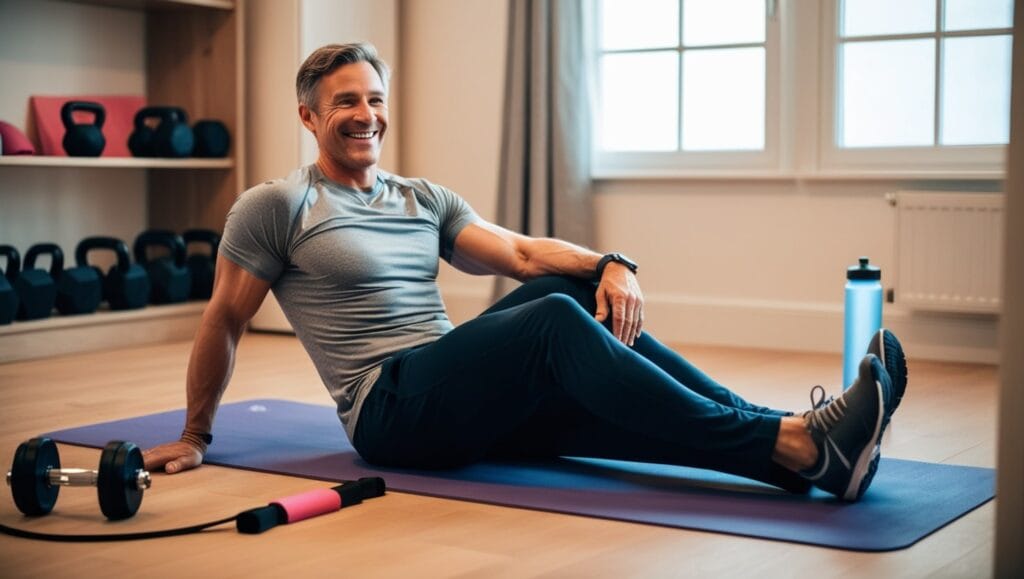
- Jumping Jacks (2 minutes): “It’s a classic for a reason.”
- Dynamic Stretching: Focus on your shoulders, hips, and hamstrings.
- Arm Circles and Neck Rolls: “Loosen up and get ready to move.”
Strength Training (20-25 Minutes)
After completing a workout, Mark always makes sure to take the time to cool down.
“Cooling down is just as important as warming up,” he says.
“It helps your body transition from high-intensity activity to a relaxed state, reducing muscle soreness and preventing injury.”
His cool-down routine typically includes slow-paced movements that allow his heart rate to gradually return to normal.
One of the first cool-down exercises Mark includes is gentle walking or slow cycling.
“I usually take 5 minutes to walk it off,” he explains.
This slow-paced activity helps bring down the heart rate and allows the body to naturally start recovering.
Cooling down also prevents blood from pooling in the lower limbs, which can cause dizziness or fainting.
By keeping the body moving, Mark allows his circulatory system to function smoothly after the workout.
Mark also incorporates deep breathing during his cool-down.
“Breathing deeply helps your body relax and releases any tension,” he shares.
Focused breathing reduces the stress hormones in the body, allowing for a calm and focused state of mind.
Mark likes to inhale through his nose and exhale through his mouth, taking a few moments to appreciate the effort he’s put in.
This mindfulness aspect of the cool-down makes the process more restorative.
Another key element in Mark’s cool-down is stretching.
“I prefer doing static stretches after a workout because they allow the muscles to lengthen and relax,” he explains.
Holding stretches for 20-30 seconds helps improve flexibility and prevents muscles from tightening up after intense activity.
Mark usually stretches his hamstrings, quads, and calves, areas that tend to get tight from both cardio and strength exercises.
Stretching after a workout also helps with post-exercise recovery by relieving muscle tension.
Lastly, Mark believes that cooling down gives him the mental time to reflect on his workout.
“It’s a moment to appreciate your body for the hard work it just did,” he says.
By taking these extra few minutes for himself, Mark enhances the overall experience and finishes his workout with a sense of accomplishment and calm.
Mark believes strength is the foundation of fitness for men over 40. “You’ve got to keep those muscles working,” he said.
- Push-Ups (3 sets of 10-15 reps): “Modify if needed—knees down is fine.”
- Bodyweight Squats (3 sets of 12-15 reps): “Great for your legs and lower back.”
- Plank Holds (3 sets of 30-60 seconds): “Core strength is key as you age.”
- Resistance Band Rows (3 sets of 12 reps): “Perfect for your back and posture.”
- Dumbbell Deadlifts (if you have weights, 3 sets of 10 reps): “Focus on form.”
Cardio Burst (10-15 Minutes)
Mark mixes in cardio to keep his heart healthy. “I like to keep it quick and intense,” he said.
- Mountain Climbers (30 seconds on, 30 seconds off, 5 rounds): “It’ll get your heart pumping.”
- High Knees (30 seconds on, 30 seconds off, 5 rounds): “Burns calories fast.”

Cool Down and Stretching (5-10 Minutes)
“This part’s non-negotiable,” Mark emphasized. “It keeps me feeling good and prevents injuries.”
- Child’s Pose: Stretch your lower back.
- Seated Forward Bend: Loosen tight hamstrings.
- Chest Opener: “Counteracts all that sitting we do.”
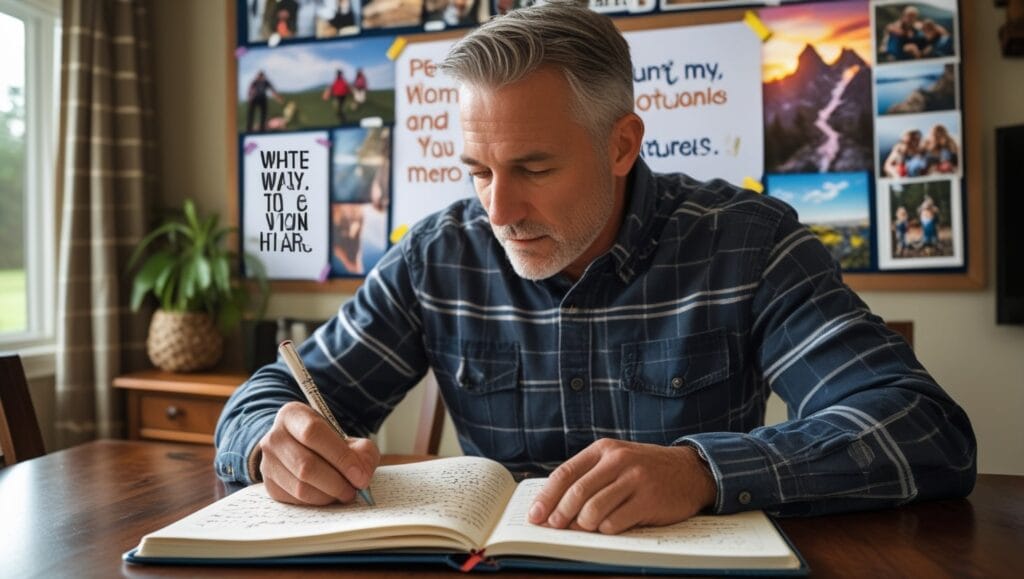
Staying Motivated
Staying motivated, especially after 40, can be one of the biggest challenges when it comes to maintaining a fitness routine. Mark learned that motivation isn’t something that just magically appears; it’s something you have to work on every single day. “Some days, I didn’t feel like working out,” he admits. “But I knew if I didn’t, I would feel worse. It’s about pushing through those moments and building a habit.” Mark found that consistency, not motivation alone, was the key to success.
One of the first strategies Mark used to stay motivated was setting clear, realistic goals. “I started small,” he says. “It was about making sure I could get through a 10-minute workout without feeling overwhelmed.” By setting achievable goals, Mark was able to experience the satisfaction of success early on. These small wins built his confidence and made him more committed to his long-term fitness journey.
To avoid burnout, Mark also incorporated variety into his workouts. “Doing the same thing every day can get boring,” he notes. By mixing up his routine with different exercises like lunges, push-ups, and even some yoga, Mark kept things fresh. This variety kept him engaged and excited about his fitness journey. “Switching things up is key,” Mark explains. “It keeps your body challenged and your mind engaged.”
Another motivation booster for Mark was tracking his progress. He kept a fitness journal where he recorded his workouts, how he felt afterward, and any changes he noticed in his body. “Looking back at how far I’ve come helped me stay motivated,” he says. “It’s easy to get discouraged, but when you see the improvements, no matter how small, it gives you the push you need.”
Mark also found that sharing his journey with friends and family helped keep him on track. “I started telling my family about my workouts and the progress I was making,” he shares. “When you make it public, it becomes harder to quit. I didn’t want to let them down.” Having an accountability partner or community can be a huge motivator, especially when you’re juggling other responsibilities.
In addition, Mark made sure to celebrate his milestones, no matter how small. Whether it was hitting a new personal best or simply staying consistent for a week straight, he took time to acknowledge his hard work. “Celebrating the small victories keeps you energized,” he says. “It’s important to recognize your progress, even if it’s just getting through a tough workout.”
When motivation wanes, Mark believes in remembering the bigger picture. “It’s easy to get caught up in short-term setbacks,” he explains. “But I always remind myself why I started in the first place. It’s about living fully and feeling good in my body.” Connecting to your deeper why—whether it’s for health, energy, or overall well-being—can reignite your motivation when it starts to fade.
Sometimes, Mark found that shifting his mindset helped him stay motivated. Instead of viewing workouts as a chore, he started seeing them as an opportunity. “I look at my workouts as a chance to take care of myself,” he says. “When you change your mindset, it’s not about forcing yourself to work out; it’s about honoring your body and its needs.”
Over time, Mark developed a positive relationship with his fitness routine. “At first, I had to push myself, but now it’s part of my day,” he says. “It’s like brushing my teeth. It’s just something I do.” This kind of consistency, driven by habit rather than motivation, was what truly kept Mark going. “Once you make it a habit, you don’t have to rely on motivation,” he adds.
Lastly, Mark believes that surrounding yourself with positivity can help keep motivation high. Whether it’s following fitness influencers on social media, listening to motivational podcasts, or simply reading inspirational quotes, Mark made sure to keep his environment supportive of his goals. “Positivity breeds positivity,” he says. “When you fill your life with reminders of your goals, it becomes easier to stay motivated.”
For Mark, motivation comes from the California lifestyle—hiking in the hills, playing beach volleyball, and staying active with his kids. “When I feel strong and fit, I can enjoy all of it more,” he shared.
He’s also a big fan of tracking progress. “Seeing improvements, even small ones, keeps you going,” Mark said. “I’ll write down my reps and times, and it’s awesome to look back and see how far I’ve come.”

Final Thoughts
In the end, Mark’s journey is more than just about fitness; it’s about embracing a mindset that prioritizes health and well-being. It’s a reminder that it’s never too late to make changes and invest in yourself. “Turning 40 doesn’t mean you have to slow down,” Mark says. “It’s a chance to redefine your relationship with your body and make healthier choices.” His story is a testament to the fact that with the right mindset, consistency, and dedication, anyone can overcome the physical and mental challenges that come with aging.
Mark’s journey wasn’t about perfection. It was about finding balance. “Some days I miss a workout, and that’s okay,” he admits. “It’s about doing your best, not being perfect.” Perfection can be a trap, and it’s important to remember that life will always get in the way sometimes. What matters is getting back on track without guilt. “Every day is a new opportunity to try again,” Mark says.
Additionally, Mark emphasizes the importance of adapting your routine to your own needs. “What works for one person might not work for another,” he points out. “You have to listen to your body.” Mark’s flexibility in his workout routine, adjusting it when necessary, is key to preventing injuries and burnout. Whether it’s scaling back a workout or adding new exercises, customizing your routine ensures that it remains enjoyable and effective.
As Mark continues his fitness journey, he has found that physical health has a direct impact on his mental and emotional well-being. “When I feel strong, I feel more confident,” he shares. “It’s not just about looking good; it’s about feeling good, mentally and emotionally.” This connection between physical activity and mental clarity is vital, especially as we age. Exercise can be a powerful tool for managing stress, boosting mood, and improving overall quality of life.
Mark’s story is also a reminder of the power of small, consistent actions. “It doesn’t take drastic changes to make a difference,” he says. “Just 30 minutes a day can lead to significant improvements over time.” Consistency is key, and when you commit to making small changes each day, you begin to see the results without feeling overwhelmed by the process.
At the heart of Mark’s success is the recognition that fitness is not a temporary fix but a lifelong journey. “I view my workouts as an ongoing commitment to myself,” Mark explains. “It’s about creating a sustainable routine that fits into my life and evolves with me.” This long-term perspective ensures that he stays on track, regardless of life’s ups and downs.
Incorporating rest and recovery into his routine was another essential lesson Mark learned. “I used to think that working out every day was the key to progress,” he reflects. “But rest is just as important as training.” Adequate recovery helps to repair the body, avoid injury, and keep the motivation high. Balancing workouts with rest days allows for sustainable progress without risking burnout.
Mark’s journey also emphasizes the importance of mindset. “Fitness isn’t just physical; it’s mental too,” he notes. Developing a resilient mindset, one that embraces challenges and doesn’t shy away from setbacks, is crucial. “The mind can either be your greatest ally or your worst enemy,” he adds. Strengthening the mind through positive self-talk, goal-setting, and mental exercises is just as important as physical training.
Looking ahead, Mark plans to keep evolving his fitness routine as he continues to age. “I know that I have to adjust as I get older,” he says. “But that’s okay—it’s part of the process.” Mark views aging as an opportunity to experiment with new forms of exercise, learn more about his body, and discover what works best for him. His open-minded approach to fitness ensures that he will remain active and healthy for years to come.
Finally, Mark’s story is a reminder that the journey to health doesn’t have to be a solo endeavor. “I’ve learned that sharing my journey with others makes it more meaningful,” he says. “Whether it’s encouraging friends or learning from others, having a support system helps keep you motivated.” Surrounding yourself with like-minded people can create a positive environment where growth and success are celebrated.
If you’re a man over 40 looking to get in shape, take a page from Mark’s book. You don’t need expensive equipment or hours of free time. What you need is a plan, some determination, and a focus on what really matters—your health, your family, and your quality of life.
As Mark says, “You’re not just working out for today. You’re building the strength and energy to enjoy life tomorrow.”
So, why not start your own home workout journey today? You’ve got this.
